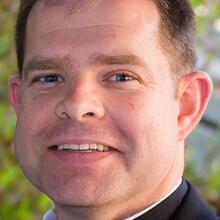Cardinal Angelo Amato, Prefect of the Congregation of the Causes for the Causes of Saints, will represent Pope Francis and beatify South Africa’s first martyr on Sunday Sept. 13. Benedict Daswa was brutally murdered for refusing to participate in witchcraft just nine days before the release of Nelson Mandela on Feb. 2, 1990.
This is a significant event in the relatively small Catholic Community in South Africa. There are about six million Catholics in South Africa which has a population of about 55 million people. European missionaries brought Catholicism to South Africa in 1487 when Bartholomew Diaz arrived in Walvis Bay. The practice of Catholicism was however forbidden under Dutch rule between 1652-1795 and later, again, the same attitude prevailed under British rule. Pope Pius VII appointed Benedictine, Edward Bede Slater, as the first Vicar Apostolic to the Cape Colony. London forbade him entry so he went to Mauritania. His successor too—William Placid Morris—was banned. The Church only was a visible institution in the South Africa in 1837 when the third Vicar Apostolic of the Cape Province, Bishop Raymond Griffith, was appointed.
Benedict Daswa was born on 16 June 1946 in a small village, Mbahé, in the north of South Africa. He married Shadi Eveline Monyai (a Lutheran) in 1974 and had eight children with her. The Daswa’s converted to Catholicism in 1980. He was a highly appreciated educator and father. He was well known in his village, Nweli, for his commitment to his faith. He was a catechist, liturgical animator, promoter of works of charity and worked for justice and peace.
On 25 January 1990 lightening struck the village where he lived and a number of houses were burnt to the ground. The villagers believed that this was not natural; they had to find the person responsible for the fire. A decision was taken by the villagers to consult a sorcerer in a nearby village to seek out the responsible person/s. Each villager was asked to contribute money towards the cost of the consultation. Daswa was not present when the decision was made and when he returned he tried to explain that lightening and thunderstorms are natural phenomena. His explanation was rejected and the people insisted that they would still consult a sorcerer. The villagers were angered by the fact that he refused to pay the money they had agreed upon. He said that his Catholic faith did not allow him to partake in anything related to witchcraft. Some villagers decided to get rid of him for his lack of cooperation and so, on the 2 February 1990, he was bludgeoned to death. Days after his death his funeral mass was celebrated in the local parish of Thohoyandou. The clergy present all wore red; they believed that Daswa died for his faith – because he refused to participate in witchcraft. Throughout the region Daswa became known as a martyr.
When Daswa converted he realised that there were certain issues in his African culture that were incompatible with his Catholic Christian Faith. He would no longer accept the widespread use of witchcraft, sorcery and ritual murder. His stance against these ultimately led to his death. In the area where Daswa lived and will be beatified, the use of witchcraft, sorcery and ritual murders is still prevalent. His martyrdom is considered to be a sign of hope for Christians in Africa especially those who are struggling to break free from enslavement to the world of witchcraft. In the booklet that has been published for the beatification mass, Daswa is described as a model for Africans because he was a man who realised that “Catholic faith implies a radical choice of Jesus as Lord and Saviour and a complete rejection of religious syncretism.”
The bishops of Southern Africa hope that the beatification of Daswa will contribute to “the revitalizing of people’s faith and will encourage them to hold firm in the face of the difficulties that they must face in their daily life.” Many African Christians struggle to negotiate their way through the demands of traditional cultures with their Christian faith.
The remains of Daswa were recently exhumed. Because of the circumstances of his death, the casket was buried under two concrete slabs at different levels to prevent locals from digging up and damaging his remains. They will be carried to the altar at the beatification mass. Thereafter they will be temporarily housed at the little Church of Our Lady Assumed into Heaven at Nweli near the site of the beatification. In a letter, signed by the President of the Southern African Catholic Bishops’ Conference, Archbishop Stephen Brislin of Cape Town, African Catholics are encouraged to “imitate Benedict Daswa by living their Catholic faith with courageous and humble commitment. Pray to him and make novenas to him, asking for special graces and favours and even miracles. Display his picture in your parish churches and homes, in your Catholic schools and other church buildings. Go as pilgrims to visit the shrine of Benedict Daswa as it develops in the coming years and also visit his tomb at the nearby church at Nweli. We also appeal to your generosity in giving financial support to the Diocese of Tzaneen to help with the development of the shrine, which will cost a considerable amount of money.”
Faithful from all over South Africa are expected to travel to the rural diocese of Tzaneen, in the Province of Limpopo, for the beatification mass. It will be broadcast live on television and by South Africa’s Catholic radio station, Radio Veritas.








